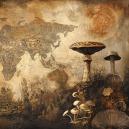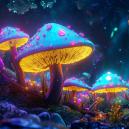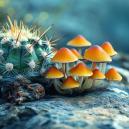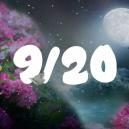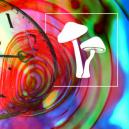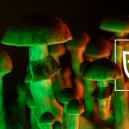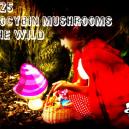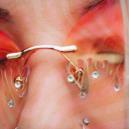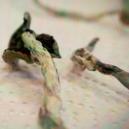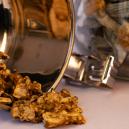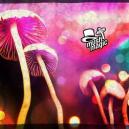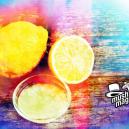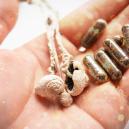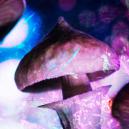How To Identify Different Species Of Magic Mushrooms
Published : November 1st, 2020

Magic mushrooms have been revered by humans for thousands of years. They've been used in spiritual ceremonies, and science is now confirming their therapeutic effects. Psychonauts have the option of growing them at home, or scouting them out in nature. Learn how to ID some of the most common magic mushroom species.
THERE ARE OVER 180 SPECIES OF MAGIC MUSHROOMS
“Magic mushrooms” is an umbrella term referring to over 180 species of fungi. These mushrooms most often contain psilocybin, the prodrug of the serotonergic psychedelic psilocin. Magic mushroom species can be found all over the planet, from the humid Amazon rainforest to the quaint meadows of England and the tropical islands of Thailand.
Psychonauts can grow their own supply of mushrooms to experience the effects, or they can hike the forests and plains to harvest these fruits directly from nature herself.
In this article, we’ll discuss the most common species of magic mushrooms, where to find them, and how to correctly identify them.
Before we get into it though, it is extremely important to understand and acknowledge foraging for mushrooms can be a very dangerous thing to do if you are inexperienced. Many species of mushrooms are toxic and can cause death. This article is for educational purposes only and is meant to spark interest. If you intend to take up mushroom foraging and take this further, we highly recommend you join a group/class and learn how to identify mushrooms in more detail. This is serious stuff; you don't want to make a mistake. Always forage with an expert.
A safer bet is to pick up some truffles from a trusted source!
THE MOST COMMON TYPES OF WILD MAGIC MUSHROOMS
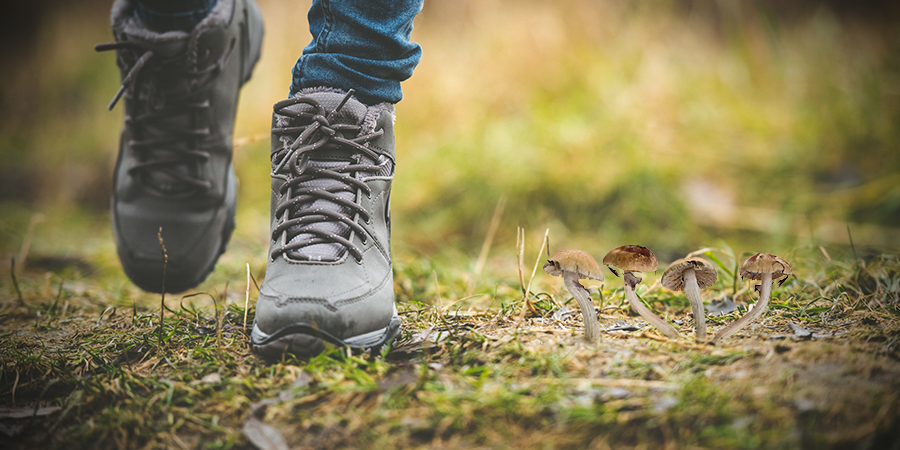
If you’re an avid hiker, chances are you’ve strolled past a patch of psychoactive fungi at some point. When the season, weather, and environmental factors converge, they become relatively common. Check out the list of common species below, and learn how, where, and when to find them.
Before we delve into these species, it’s helpful to learn some basic mushroom anatomy to make understanding their descriptions easier. Like many plants, psilocybin mushrooms feature a stem. However, in the world of mycology, this is referred to as a stipe.
On top of the stipe sits a dome-shaped structure called a cap, otherwise known as the pileus. The top side of the cap displays distinct features that help with identification. The underside of the cap houses the gills—thin, vertically positioned structures. The gills are covered by a layer of tissue to protect them during earlier stages of development. This structure, called the partial veil, spans from the edges of the underside of the cap to the stipe.
PSILOCYBE CUBENSIS
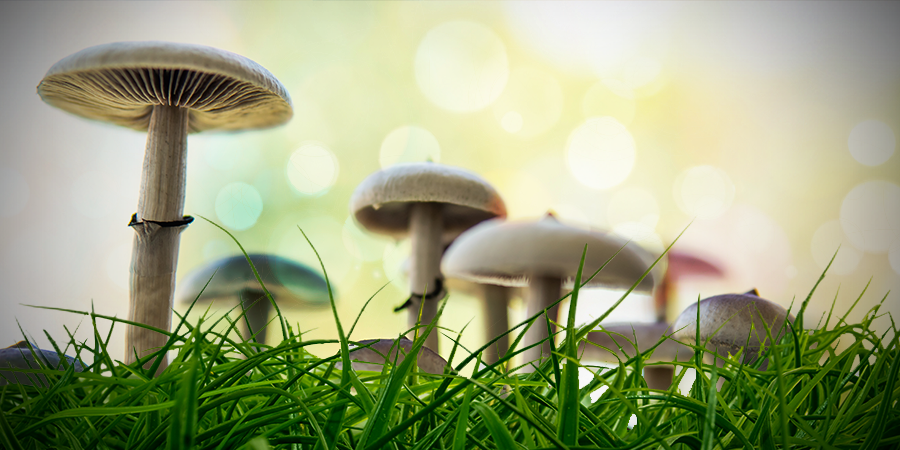
Psilocybe cubensis is one of the most commonly cultivated species of psilocybin mushrooms. Also referred to as “cubes”, various strains of Psilocybe cubensis have been developed by breeders. These include B+, Amazonian, Golden Teacher, and Penis Envy. On average, cubensis contains psilocybin levels of 0.37–1.30% by dry weight.
In nature, species can be found growing wild in regions of the United States, Central and South America, Southeast Asia, and Australia. “Cubensis” means “coming from Cuba”, another region where the species resides.
If you’re looking for Psilocybe cubensis, you should know that the species has an innate affinity for dung—especially that of large herbivores. Some of the most common locations to find wild fruiting bodies include pastures and grasslands grazed by livestock such as cows and goats. Also, the species is at home in tropical and subtropical environments. If you live in Florida, for example, you’re in luck!
Some of the distinguishing features of Psilocybe cubensis lie in the cap. The pileus is usually between 2–8cm across. It features a conic to convex shape that becomes broadly convex with age. The cap of young specimens is reddish-cinnamon brown, and turns golden brown with age.
The stipe is between 4–15cm in length and 0.5–3.8cm thick. It is whitish and will take on a bluish hue when bruised—a surefire sign of psilocybin. Young specimens display a white stipe that may turn yellow with age. The stipe of old specimens may feature an annulus (or ring), which is the leftover tissue from the partial veil.
The gills are adnate (broadly attached to the stipe) to adnexed (narrowly attached to the stipe). They’re wider toward the centre, pallid to grey when young, and turn dark purple-black when older.
Another way to identify mushrooms is by collecting a spore print. Detach the cap from the stem and place it gills down onto a piece of paper or tin-foil. Psilocybe cubensis spore prints should be dark purple-brown.
The species is most commonly found in June, and then during August and September.
PSILOCYBE AZURESCENS
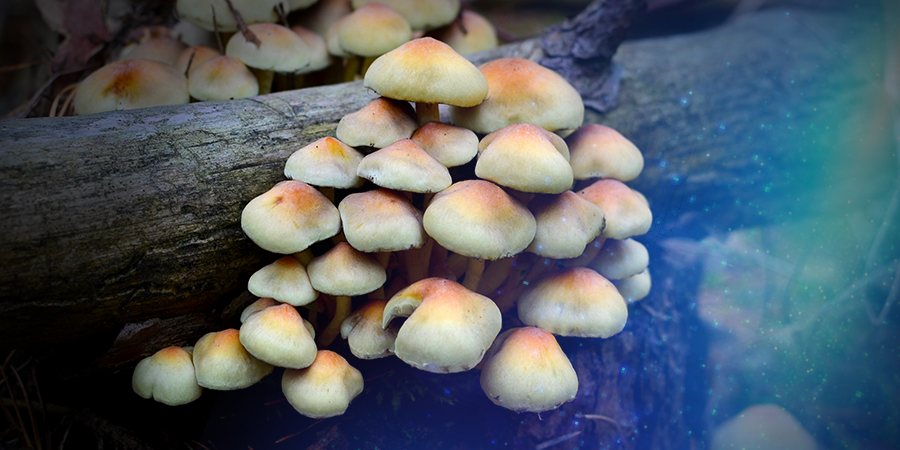
Psilocybe azurescens is one of the most potent Psilocybe mushrooms found in nature. By dry weight, the species contains around 1.8% psilocybin. The species grows natively along pockets of the West Coast of the United States. It flourishes in parts of Oregon, California, and up to Harbour County, Washington. Surprisingly, foragers have also identified feral specimens in Stuttgart, Germany.
The species can be found on broadleaf wood chips and in sandy soils, mostly during November.
The cap is 30–100mm in diameter, conic to convex, and flattens with age. The surface is smooth, brown to caramel in colour, with dark blue and bluish-black zones. The gills are adnate or sinuate (smoothly wavy) and brown. The stipe is 9–22cm in length, 3–6mm thick, bare, and bruises blue. The stipe also thickens toward the bottom and is silky white in appearance. The spore print of Psilocybe azurescens is blackish-brown to purple.
PSILOCYBE CYANESCENS
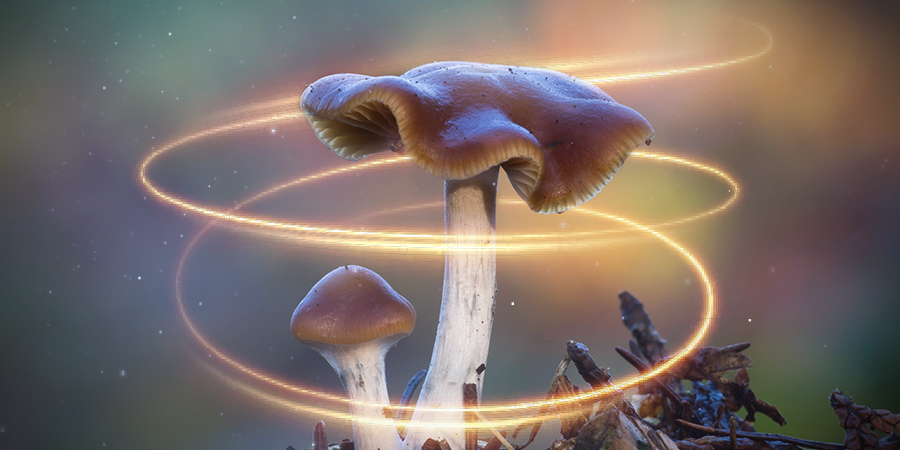
Psilocybe cyanescens—also known as wavy caps—has a widespread distribution. The species grows in the United Kingdom, Germany, the Netherlands, Sweden, North America, South Africa, and New Zealand. If you happen to stumble on a patch, chances are you’ll find enough to dry and stash for the foreseeable future. Cyanescens typically fruits in large quantities, with a flush of over 100,000 fruiting bodies discovered in England. The species is mostly found growing in wood chips and mulched plant beds from September to December.
Psilocybe cyanescens features a caramel to chestnut-brown cap when fresh, which turns slightly yellow when dried. The cap is around 1.5–5cm across and has distinctly wavy edges. Underneath the cap, the gills are adnate, light brown to dark purple, with lighter edges. The stipe doesn’t have an obvious annulus, but may display traces of partial veil tissue. Fresh mushrooms will bruise blue when damaged. The caps will leave a blackish-brown to purple spore print.
The species has a deadly lookalike: Galerina marginata.
AMANITA MUSCARIA (FLY AGARIC)
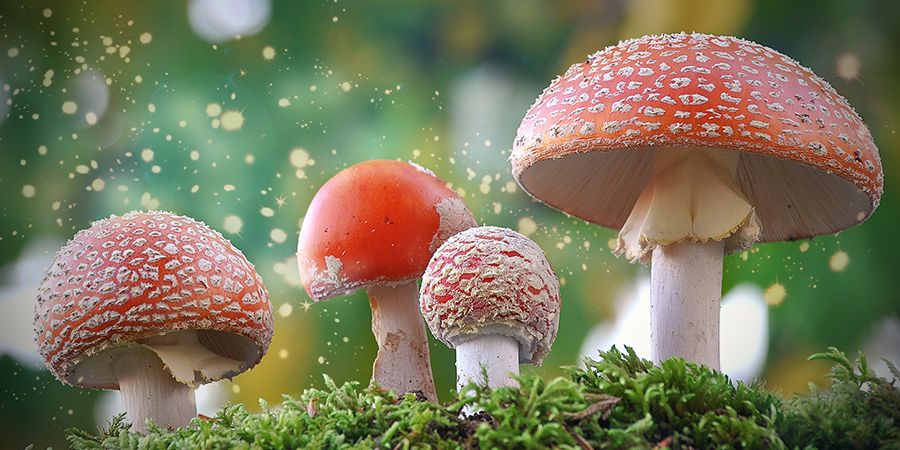
Visually stunning, Amanita muscaria is the quintessential embodiment of a toadstool. It’s a species that regularly shows up in fairy tales, films, and art. Although the species doesn’t contain psilocybin, it still has magical status. Many field guides describe Amanita muscaria as toxic, which is true. When raw, the species contains the active molecules ibotenic acid and muscimol. The former is a known neurotoxin, whereas the latter is known to be psychoactive. However, ibotenic acid converts into muscimol through oven drying.
The species is found all over the planet, from Northern America, Europe, and Russia, to India, Africa, and South America. The recognisable cap is red (sometimes orange-yellow) and flat or convex. The cap features white dots (may appear yellow on North American species), which are remnants of tissue from when the mushroom emerged from the egg-like universal veil when young. The gills are white in appearance and classed as free, meaning they don’t make contact with the stipe. The stipe features an annulus and emerges from a volva, a cup-like structure in the ground.
Amanita muscaria is mycorrhizal, meaning it grows in symbiosis with certain trees. You’ll find it in both coniferous and deciduous woodlands, particularly at the base of pine, spruce, fir, birch, and cedar. Like others, fly agaric has some very dangerous look-a-likes.
PROCEED WITH CAUTION, KEEN PSYCHONAUTS!
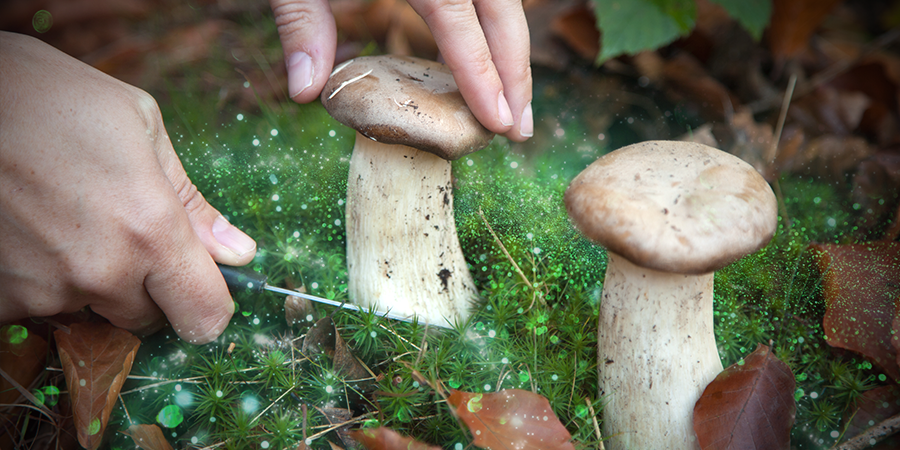
Again, there is a famous saying in mycology: “All mushrooms are edible, but some only once”. It’s advised to take extreme caution when foraging for mushrooms to avoid consuming poisonous species. Invest in multiple high-quality field guides and consult expert mycologists. Eating toxic mushrooms is no joke. The toxins can cause severe damage to your organs and even result in death. Misidentifying a mushroom can be a costly mistake, especially when so many magic mushrooms have toxic doppelgangers.
Take great care and know which species have toxic lookalikes. Only eat a mushroom if you are 110% sure of the species. Proceed with caution.

